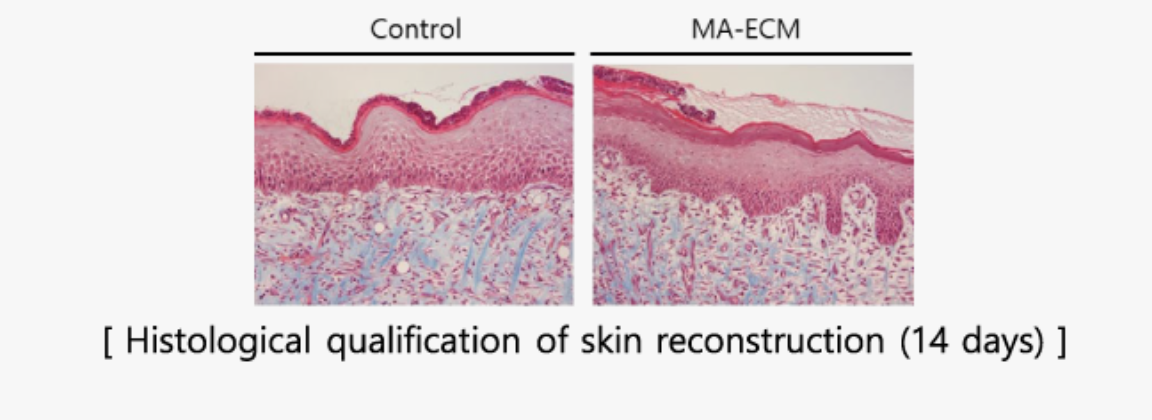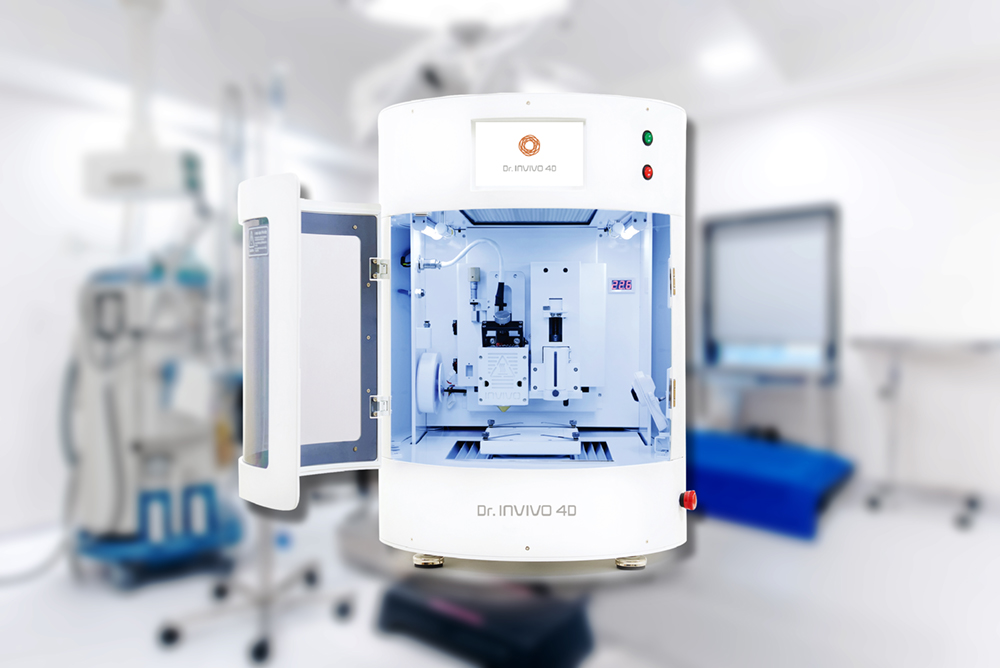After years of investigating ways to manage treatment for diabetic foot ulcers (DFU), Korean 3D bioprinter manufacturer, Rokit Healthcare finally announced the success of a new DFU regeneration platform based on its 4D bioprinting technology for customized tissue regeneration. This new and alternative method for chronic wound healing promotes a mechanism of skin reconstruction for DFU treatment that was successfully tested on patients and will be globally commercialized this year.
To find an advanced treatment method, particularly for wound healing, Rokit tested the DFU therapy with its own 4D bioprinting system, using a personalized bioink developed with the patient’s own adipose tissue that had no immune rejection.
With diabetes on the rise in most countries, patients require targeted therapies and effective solutions for pain management. Today, over 460 million adults have diabetes, that’s roughly 6% of the global population, and it is expected to reach 700 million patients by 2045. Furthermore, diabetes can damage eyes, kidneys, and nerves, cause heart disease, stroke, and even the need to remove a limb. In fact, diabetic foot ulcerations are one of the most common complications associated with diabetes, as an estimated 50% of diabetic ulcers become infected and could result in amputation.
Rokit’s mission is to decrease the rate of amputation for patients with DFU, by offering safe and effective regenerative therapy based on 4D bioprinting technology. As part of one of their continuing studies, a global Rokit team successfully tested its DFU regeneration platform on patients in India and will continue clinical trials in South Korea, Europe, North America, and East Asia.
The process begins with fat tissue taken from a patient (for example through liposuction), which is then used to prepare an autologous extracellular matrix (ECM) mixture to form a bioink that is loaded into Rokit’s INVIVO 4D bioprinter to produce a dermal patch. The autologous patch is finally implanted at the wound site after the damaged tissue has been removed.
The results of the study, published in the American Diabetes Association‘s journal Diabetes, describe how the autologous ECM patch, applied onto the chronic wound site of DFU patients, resulted in a significant wound size reduction after only a one-time treatment.
During the tests, most of the patients showed complete closure of the wound in only two to five weeks. In fact, after a 14-day skin wound healing process, the treated wound area had more effectively reconstructed epidermal and dermal structures when compared to the non-treated wound areas.

After the process, the treated wound area has more effective reconstructed epidermal and dermal structure compared to the non-treated area (Credit: Rokit Healthcare)
“My team recently focused on skin regeneration, especially for caring diabetic foot ulcers. Using our 4D bioprinting system with patient’s autologous fat tissue, diabetic foot ulcers were successfully healed after getting only one treatment during the clinical trials. Rokit’s DFU regeneration platform will provide a safe, fast, and cost-effective solution for curing diabetic wounds,” said Jeehee Kim, president of Rokit Healthcare’s DFU and Skin Regeneration Strategy Business Unit and author of the published paper.
Currently, diabetic foot ulcers are treated with dressings, negative pressure, and skin grafting, but according to Rokit, these treatments have proven ineffective, costly, and time-consuming for patients, moreover, they do not provide the correct therapeutic approach as regenerative medicine and tissue engineering would. Instead, the company’s alternative treatment solution to promote skin reconstruction, along with its use of biomaterials and bioink designs, can hold a lot of promise for future effective customized 4D bioprinting to regenerate human tissues and organs.
To find an advanced medical solution, particularly for diabetic wound healing and skin regeneration, Rokit used its 4D bioprinting platform along with the minimally manipulated autologous fat tissue. According to the company, INVIVO was key to its success, provided a fast regeneration effect and customized treatment that fits the skin loss area.
“Dr. INVIVO is what we believe to be a scientific breakthrough. It’s the world’s first clean bench hybrid 4D bioprinter. When creating a regenerative patch on diabetic foot ulcer patients, Dr. INVIVO plays a mayor role. With its precise and rapid manufacturing capabilities, Dr. INVIVO helps create a personalized therapy solution by building patient specific designs,” explained one of Rokit Healthcare’s R&D engineers, Jaeyong Shin One.
As reported by MK’s Maeil Business Newspaper, Rokit Healthcare has begun commercializing in 48 countries its DFU treatment platform that uses 4D bioprinter Dr. INVIVO. To that end, the company signed a per region export business cooperation agreement and expects the number of sales for this year alone to reach 424 million dollars and well over one billion dollars by 2022. For now, the contract enables commercialization of the platform to India, countries in Europe, Latin America, the Middle East, and North Africa. However, the company already has plans to expand, launching the platform in other regions, like North America, Japan, China, and Australia.
The platform includes all of the procedures required to treat DFU, including 3D scanning of the affected area, diagnosis, bioprinting with personalized bioinks, and a procedure kit. In addition to domestic patents, the company has obtained certifications from the European Medicines Agency (EMA) and is currently undergoing the required procedures from the Food and Drug Administration (FDA) that would allow commercialization in the United States.
The company’s INVIVO bioprinting technology has already been acquired by research labs and institutions in more than 25 countries, specializing in tissue and material engineering, drug testing, 3D tissue, and disease modeling. Dr.INVIVO is the world’s first sterile, all-in-one 4D organ regenerator. Rokit’s autologous skin regeneration procedure using Dr.INVIVO already received regulatory approval for non-advanced therapy medicinal products (ATMP) by the EMA for the treatment of diabetic ulcers, pressure ulcers, scar revision, and burn wounds, meaning immediate access to the operating room.
“Imagine that you get a 3D bioprinting service in a hospital to renew your damaged body parts. The human body is composed of cells, proteins and extracellular materials that we can also use a bioink to regenerate organs, which means regrowing the injured body back to its original shape and function,” Kim went on. “4D bioprinting technology is the best method to create human organs, such as skin, cartilage and bone tissue. We live in the era of the fourth industrial revolution that will ideally change human lifestyle, including our healthcare service. Now, Rokit Healthcare leads the advanced cutting edge 4D bioprinting technology as a pioneer.”
Ulcer healing usually takes weeks or even months, with many ulcers never healing and resulting in amputations. By promoting mechanisms of skin reconstruction, this alternative method could be essential to reducing the risks associated with DFU’s, as well as help lower therapy costs, and lead to a better quality of life for patients. By attempting to cure the inevitable development of diabetic ulcers, Rokit Healthcare is pioneering the foot regeneration treatment market thanks to its innovative development. However, healing diabetic ulcers is only the beginning, the company’s unique treatment platform is already moving into cartilage regeneration and other skin wounds and disease.
Subscribe to Our Email Newsletter
Stay up-to-date on all the latest news from the 3D printing industry and receive information and offers from third party vendors.
You May Also Like
Air Force Awards Fortius Metals $1.25M to Qualify 3D Printing Wire for Hypersonic Applications
AFWERX, part of the US Air Force Research Laboratory (AFRL), awarded a Direct-to-Phase II Small Business Innovation Research (SBIR) contract worth $1.25 million to Colorado’s Fortius Metals, to accelerate qualification...
US Air Force Awards JuggerBot $4M for Large-format Hybrid 3D Printing
Large-format 3D printer manufacturer JuggerBot has received a $4 million grant to develop a large format 3D printer, courtesy of the Under Secretary of Defense, Research and Engineering Manufacturing Technology...
Where Have All AM’s Unicorns Gone?
In the rapidly evolving world of 3D printing, startups valued at over a billion dollars, known as unicorns, once seemed as fantastical as the mythical creatures themselves. While a few...
How My Childhood Fascination with Planes Led to Investing in 3D Printing
My fascination with aerospace started young, and I started studying planes–identifying them in the sky and learning everything I could about how they work. Fast forward to my first week...

































